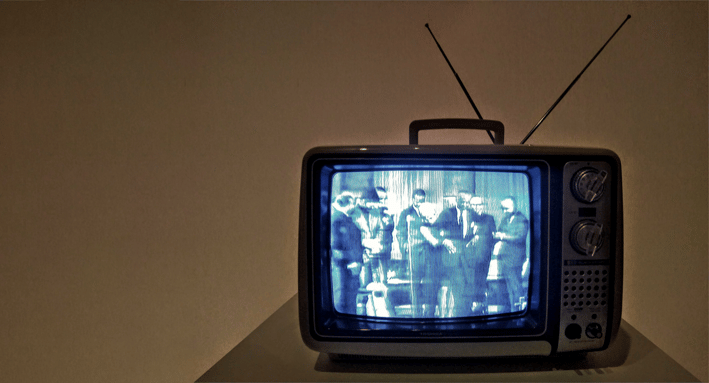Long before Victor Frankenstein was an infamous scientist, he witnessed a violent thunderstorm that left a lasting impression on him. He recalls a particular bolt of lightning from this storm:
I beheld a stream of fire issue from an old and beautiful oak which stood about twenty yards from our house; and so soon as the dazzling light vanished, the oak had disappeared, and nothing remained but a blasted stump. When we visited it the next morning, we found the tree shattered in a singular manner. It was not splintered by the shock, but entirely reduced to thin ribbons of wood. I never beheld anything so utterly destroyed.1
Later in life, after years of unholy passions and unguarded ambition, he references this scene of destruction when evaluating himself:
During my youthful days discontent never visited my mind . . . the sight of what is beautiful in nature or the study of what is excellent and sublime in the productions of man could always interest my heart and communicate elasticity to my spirits. But I am a blasted tree; the bolt has entered my soul; and I felt then that I should survive to exhibit what I shall soon cease to be—a miserable spectacle of wrecked humanity, pitiable to others and intolerable to myself.
A similar confession is echoed today by all who are honest about their own sinfulness.
Each one of us knows of churches, relationships, and individuals that have become “a blasted stump” due to unchecked sin.
In fact, we would all be nothing but sin-tattered debris if God did not preserve us.
Yet not all sin has equally destructive consequences in this life. You will not face the same consequences for lying to your friend as you will for sustained drug abuse, even though both are heinous before God. An awful example of this reality is found in transgenderism.
Men and women who attempt to transition between genders leave themselves scarred in a way that most people can’t comprehend. Can you imagine having your sins literally carved into your body for all to see?
Just as Paul through torture and trials bore the marks of Christ in his body (Gal. 6:17), the “transitioned” person bears the marks of delusional rebellion in their body—each scar serves as a living testimony of transgression. One “detransitioner” explains the physical reminders of such sin:
There is a very deep, painful symbolism behind losing your original voice and having no way of getting it back. For many of us it is not the physical changes themselves that are troubling but what they represent. … they remind me of what I did to myself, how I rejected and betrayed myself, how deeply I took other people’s hatred into my own body. My body is now marked forever by that hatred and that can be a lot to carry. Many of us have struggled with feeling like we have ruined ourselves.2
The reality is that such people have ruined themselves. They have destroyed themselves with sin. They should confess with David,
There in no health in my bones because of my sin. For my iniquities are gone over my head; As a heavy burden they weigh too much for me. My wounds grow foul and fester because of my folly. I am bent over and greatly bowed down; I go mourning all day long. For my loins are filled with burning, and there is no soundness in my flesh. I am benumbed and badly crushed; I groan because of the agitation of my heart (Psalm 38:3–4. Emphasis added).
But what can we say to such a person? What comfort can we offer to the young woman who surrendered the ability to have children? Or the young man who chose permanent impotency?
While we may be tempted to downplay the destructiveness of transgenderism to comfort them or (more likely) our own mind, this approach is counterproductive. The comfort it offers is shortsighted and, ultimately, downplays the love of God in Christ.
The love of God is demonstrated in the great distance Christ traversed to save sinners, so shortening that distance necessarily diminishes the demonstration. It is “while we were still helpless,” “while we were yet sinners,” and “while we were enemies” that “Christ died for the ungodly” (Rom. 5:6, 8, 10). It is in this way that “God demonstrated His own love toward us” (Rom. 5:8; see also 1 John 4:9). To minimize the severity of sin is to minimize the love of God in salvation.
So, no comfort should be given outside of the true cure—the gospel of Jesus Christ. The only true comfort for a person mutilated by sin is that their sins would be forgiven and they would be declared righteous before God on the merits of Christ alone. But while the unique comfort of the gospel begins with regeneration, faith, and a new legal standing before God, it does not end there.
The gospel also offers the repentant transgender person a home in the present and a hope for the future.
A Home in the Present
When a person makes the decision to destroy themself through transgenderism, it usually comes at the price of alienation from their family and friends. Then, if the same person decides for any reason to leave the LGBTQ+ “community,” they are typically met with cult-like shame.3
When a sinner is saved, they go through the opposite process. They are baptized by the Spirit into the Church (1 Cor. 12:13). They are unified with the body of Christ, never to be separated again. This is true regardless of how heinous our previous lives were.
Consider Paul who oversaw the murder of Stephen (Acts 7:58), dragged people to prison from their homes (Acts 8:3), and threatened murder against Christians generally (Acts 9:1). By his own self-reflection he was a “persecutor of the church” (Phil. 3:6) and “violent aggressor” (1 Tim. 1:13). His sin was known so widely that, even with direct revelation from God, Ananias hesitated to welcome him (Acts 9:13–14).
Yet, when Ananias finally met Saul, he greets him as “Brother Saul” (Acts 9:17). This is the greeting that awaits every sinner saved by God. The transgender person who is washed by Christ is not a pariah for the Church, but “brother” or “sister.”
In the community of the redeemed, the same scars of sinful self-destruction that once merely pointed to the depravity of the individual now point to the grace of Christ.
Just like Paul, the testimony of our sinfulness as Christians serves the purpose of pointing to Christ’s patience (1 Tim. 1:16).
As great a comfort as this is, the physical damage of transgenderism will be an abiding reality in this life.
A Hope for the Future
Justification before God and baptism into the Church are present realities that produce joy in all believers. But it would be a mistake to think that the work of Christ offers no remedy for the physical effects of sin we all endure—this would be Gnostic-leaning gospel.
Mike Riccardi explains, “Gnosticism was a second-century Greek philosophical school that taught, among other things, a radical dualism—that the spiritual is inherently good and the material inherently evil. . . . The Gnostics taught that the body was a prison which incarcerated the true self of the spirit.”4
If we are not careful, we can present a gospel that emphasizes spiritual regeneration only. But humans are both body and soul—immaterial and material (Gen. 2:7)—and Christ came to redeem whole persons.
One of the oldest Protestant catechisms begins with the question, “What is your only comfort in life and death?” The answer, which may be a surprise to modern evangelicals, states, “That I, with body and soul, both in life and death, am not my own but belong to my faithful Savior Jesus Christ.”5 Our hope in Christ does not lead to a disembodied paradise, but to the New Earth with the resurrected Christ.
To quote Paul, “If we have hoped in Christ in this life only, we are of all men most to be pitied” (1 Cor. 15:19). The hope we have as Christians does not end with a regenerate spirit in a decaying body. It ends with a glorified body free from all the devastating effects of sin: “So also is the resurrection of the dead. It is sown a perishable body, it is raised an imperishable body; it is sown in dishonor, it is raised in glory; it is sown in weakness, it is raised in power” (1 Cor. 15:42–43; see Phil. 3:21).
Abigail Shrier’s book Irreversible Damage is a helpful introduction to the destructive practices of transgenderism, but the title is inaccurate. Not only can the damage of sin be reversed, but the very body which bore the damage can be redeemed.
However, even in the New Earth, the greatest joy of the believer is not simply to exist without death, mourning, crying, or pain (Rev. 21:4). It is to exist as a permanent trophy of the grace of Christ. We are saved, “So that in the ages to come He might show the surpassing riches of His grace in kindness toward us in Christ Jesus” (Eph. 2:7).
The hope for the transgender person, and for all of us, begins with salvation in this life and ends with an eternity of praising Christ (Rev. 5:9) as redeemed persons—body and soul.
Comfort for the Self-Destructed
In the coming years, as the adrenaline high of well-marketed self-destruction begins to wear off, Christians will be faced with many men and women who have mangled themselves in rebellion against God. But if their mourning goes beyond simple agitation over the effects of sin to true repentance and faith in Christ as savior, “They shall be comforted” (Matt. 5:4).
As ambassadors for Christ, we have the only message of hope for the self-destructed. The gospel begins with regeneration, faith, and justification, brings the sinner into the community of the Church, and promises a future free from the very effects and presence of sin.
There is hope for the self-destructed—in this life and the next—in Christ alone.
Suggested Resources
1. Mike Riccardi, “Male and Female He Created Them, Part 1” https://www.thegracelifepulpit.com/sermons.aspx?code=2023-04-23-MR
2. Mike Riccardi, “Male and Female He Created Them, Part 2” https://www.thegracelifepulpit.com/sermons.aspx?code=2023-04-30-MR
References
[1] Both quotations from Frankenstein; or, a Modern Day Prometheus by Mary Shelley are taken from this free edition of the book provided by Project Gutenberg: https://www.gutenberg.org/files/84/84-h/84-h.htm. Emphasis added.
[2] Ryan T. Anderson, When Harry Became Sally: Responding to the Transgender Movement (New York: Encounter Books, 2018), 74–75. Quoted in Mike Riccardi, “Male and Female He Created Them ,Part 2” https://www.thegracelifepulpit.com/sermons.aspx?code=2023-04-30-MR
[3] Abigail Shrier records such experiences. Abigail Shrier, Irreversible Damage: The Transgender Craze Seducing Our Daughters (Washington, D.C.: Regnery Publishing, 2020), 185–204.
[4] Mike Riccardi, “Male and Female He Created Them, Part 1” https://www.thegracelifepulpit.com/sermons.aspx?code=2023-04-23-MR
[5] The Heidelberg Catechism (1563), Question and Answer 1.






